All starts with two Germans and Khun Daeng
-- Paradise Bungalows
Khun Daeng and Pi Nut were the first to build bungalows in Khao Lak area in 1986. As the Paradise Bungalows were located in Pakweep near the property of Le Meridien today, they were never really recognized as the first bungalows of Khao Lak. The honor to be the founder of Khao Lak was awarded to another pioneer, Gerd Serucnik.
Richard Doring stayed in Paradise Bungalows in 1986 with a VW camper for two nights and enjoyed the company of Daeng and Nut very much.
-- Khao Lak Bungalows
For the first time Khao Lak was mentioned in a German tourist guide book in 1988 in the second edition of the "Traveller Handbuch Thailand" by Stefan Loose Verlag. In the same year the English translation was published by Springfield Books Limited in "The Traveller's Guide" - "Thailand and Burma", written by Richard Doring, Stefan Loose, Ursula Spraul-Doring and Renate Ramb.
According to the philosophy of the publisher not to promote undiscovered areas, Richard Dorings short German text was translated into four meagre sentences about Khao Lak (page 432): "You will reach the KHAO LAK NATIONAL PARK 33 km before Takua Pa, on the left hand side (beautiful beach). The brand new KHAO LAK BUNGALOW* resort is 1 km further on, to the left, on the beach. Simple huts and a restaurant in a lovely environment. A bus from Phuket will cost you 25 Baht (102 km)."
In 1988 the * meant a room for two persons for under 100 Baht, when the exchange rate for 1 US $ was 25.90 Baht and for 1 DM only 15.20 Baht. In comparison in 2011 the exchange rate for 1 US $ is about 30 Baht, for 1 Euro (= 1.96 DM) about 40 Baht. A tourist gets today about 20 to 30 % more Baht than in 1988.
As the inflation rate for food stuff in Thailand was also about 30% in these 23 years, a tourist pays today roughly the same amount in foreign currency as 25 years ago -- quite remarkable.
As an example: In 1988 we paid 25 Baht for a plate of "Khao Niau Mamuang" (Sticky rice with mango) in Takua Pa, today I paid 35 Baht in the same shop.
In 1987 the nine 80 Baht huts of Khao Lak Bungalows were situated under old cashew nut trees in the location of Khao Lak Resort today, still today one of the most beautiful forest areas of Khao Lak where squirrels frolic in the trees and hornbills and monitor lizards are a common sight. The bathrooms were in a separate building which in the night involved an adventurous walk with a torch among the trees.
The owners were the two young couples Gerd and Noi Serucnik and Wolfgang (called Hans) and his Thai wife.
They lived in a two storey building that they had built with their own hands. The ground floor doubled as the resort restaurant. The atmosphere among the mainly German backpackers was very relaxed, the always helpful Gerd and his very joyful wife Noi were splendid hosts, happy to make their dream come true. We never met Wolfgang, though, who was always busy elsewhere.
The German speaking travelers who knew how to read their "Loose" soon discovered the hidden treasure of the Khao Lak Bungalows and the perfect beaches that extended to the north. Khao Lak became a heaven for German speaking tourists, and for many years every second guest of the Khao Lak Bungalows carried the "orange bible" written by the Dorings.
A severe hindrance for further development of Khao Lak were the tin mining ships that dug out the sands a few kilometers in front of Khao Lak in search for the valuable tin ore. The vibrating sound of their huge Diesel generators was an unbearable noise in the night for many travelers, and they did not stay for long.
Nevertheless the Khao Lak Bungalows thrived in an atmosphere of friendship and peace in a perfect nature.
The name Khao Lak became well known among German, Swiss and Austrian travelers who enjoyed the friendship with the locals and returned year after year.
English guidebooks ignored Khao Lak for many years, which turned out to be a bonus for the unique peaceful development of Khao Lak area. | 
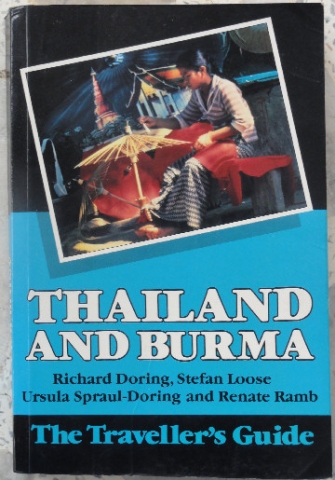
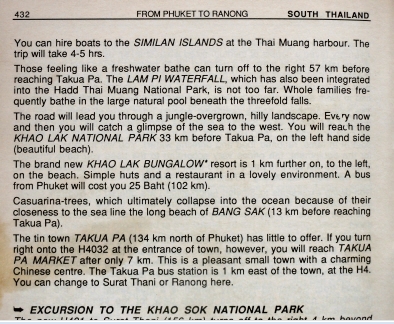
The first mention of Khao Lak
in a travel guide book
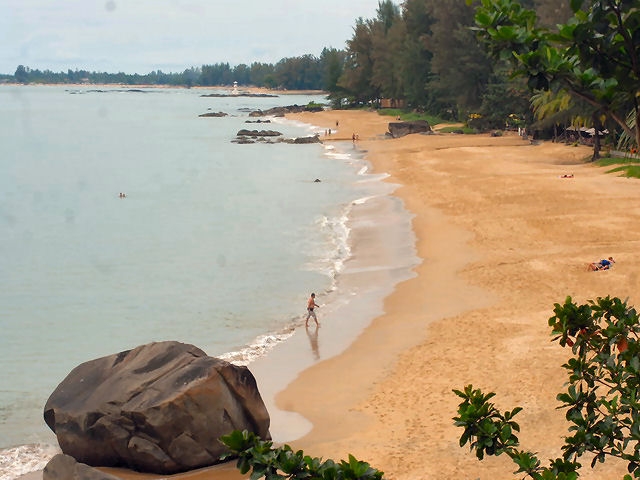
Sunset Beach
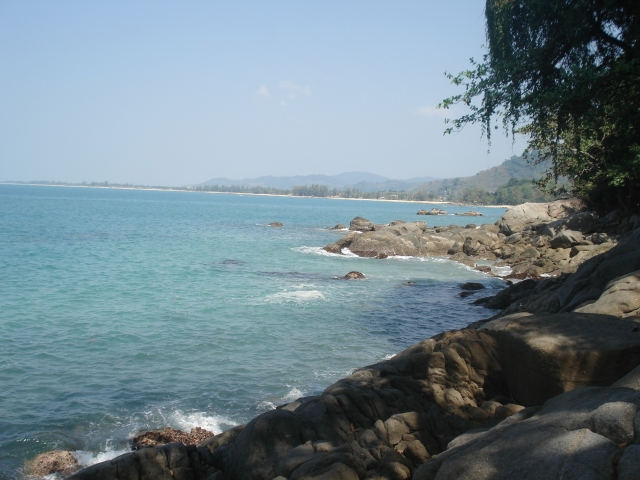
The rocky beach of
Khao Lak National Park
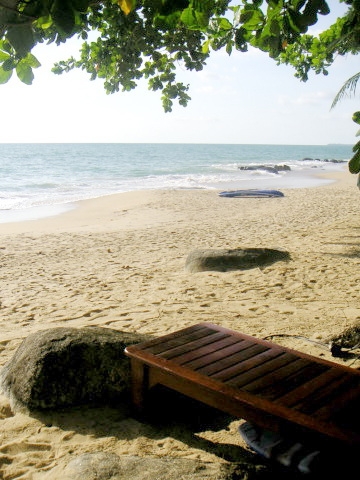
The beach of the
Khao Lak Bungalows |

